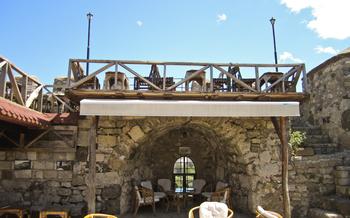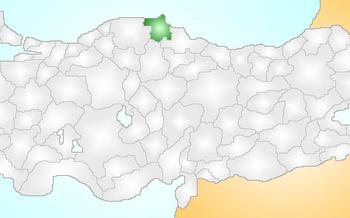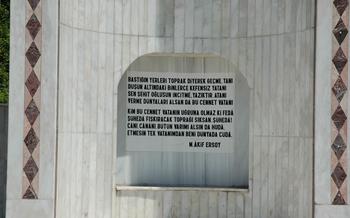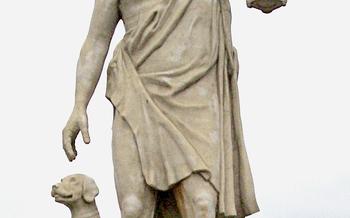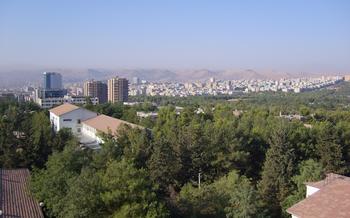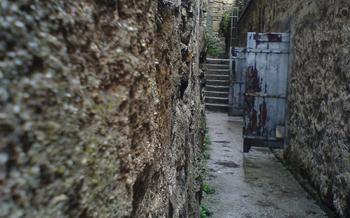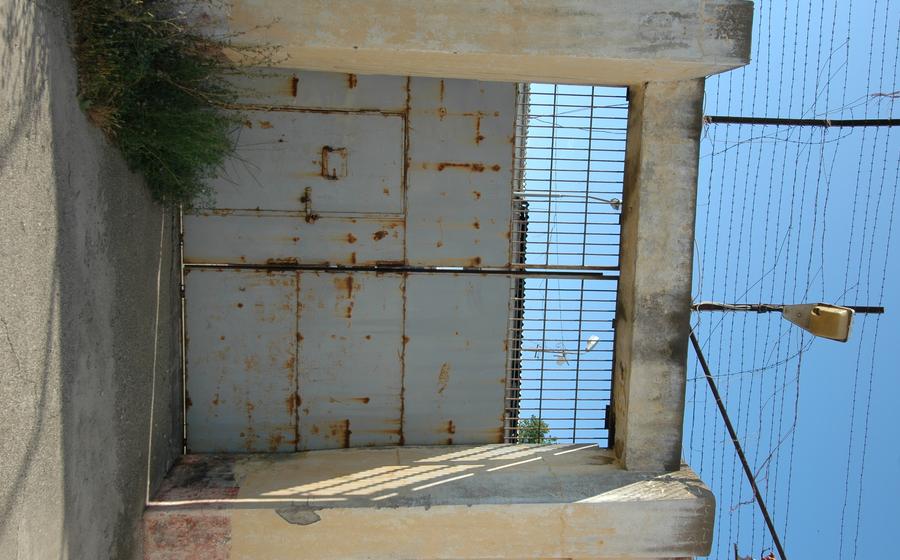
Sinop Prison Museum
- History and Significance of Sinop Prison
- Architectural Features
- Museum Exhibits
- Famous Prisoners
- Cultural Significance
- Restoration and Preservation
- Educational Programs
- Visitor Information
- Accessibility and Facilities
- Photography and Social Media
- Local Cuisine and Restaurants
- Insider Tip: Uncover the Hidden Stories
History and Significance of Sinop Prison
Sinop Prison, a relic of the Ottoman Empire, stands as a testament to the resilience of the human spirit amidst adversity. Built in the 19th century, the prison served as a place of confinement for political prisoners, criminals, and dissidents who dared to challenge the oppressive regime. Its strategic location on a peninsula, surrounded by the vastness of the Black Sea, added to its isolation and the difficulty of escape.
Beyond its physical structure, Sinop Prison holds immense historical significance as a symbol of resistance and perseverance. Countless stories of prisoners who endured unimaginable hardships, resisted against injustice, and maintained their dignity in the face of despair echo within its walls. Among them are renowned figures in Turkish history, such as Mustafa Kemal Atatürk, the founder of the Turkish Republic, who was imprisoned here during the Ottoman era.
Preserving Sinop Prison as a historical landmark is crucial for remembering the struggles and sacrifices of those who were unjustly incarcerated within its walls. It serves as a poignant reminder of the importance of freedom, justice, and human rights. Visitors to the prison are transported back in time, gaining a deeper understanding of the complexities of Turkey's past and the enduring spirit of its people.
Architectural Features
The architectural design of Sinop Prison is a testament to its historical significance and resilience. Built on a peninsula jutting into the Black Sea, the prison's location provided a natural barrier, making it difficult for prisoners to escape. The prison's exterior is characterized by its imposing stone walls, which have withstood centuries of wear and tear. The walls are punctuated by narrow windows, providing a glimpse into the prison's dark interior.
Inside the prison, the layout is simple yet efficient. The cells are arranged in long rows, with a central corridor running through the middle. The cells are small and cramped, with just enough space for a bed and a few personal belongings. The walls are bare, and the only light comes from the small windows. The prison's construction materials are a testament to its durability. The walls are made of thick stone, which has been reinforced over the years with concrete. The floors are made of wood, which has been worn down by the footsteps of countless prisoners.
The prison's design reflects the harsh reality of life for its inmates. The small, cramped cells and the lack of light and ventilation created a suffocating atmosphere. The prison's location on a peninsula, far from the mainland, added to the sense of isolation and despair. Despite the harsh conditions, the prison's architectural features have ensured its survival as a historical landmark, standing as a reminder of the struggles and sacrifices of those who were incarcerated within its walls.
Museum Exhibits
The Sinop Prison Museum showcases a diverse range of exhibits and displays that offer a glimpse into the prison's history and the lives of its inmates. One of the most poignant exhibits is a collection of letters written by prisoners to their loved ones. These letters, often smuggled out of the prison, reveal the prisoners' innermost thoughts and feelings, their hopes and despair, their resilience and their longing for freedom.
Another powerful exhibit is a display of artwork created by prisoners. These works of art, which range from paintings and drawings to sculptures and crafts, provide a unique insight into the prisoners' creative spirit and their ability to find beauty and expression even in the darkest of circumstances.
The museum also features a number of interactive and multimedia displays that enhance the visitor experience. These displays include historical photographs, videos, and audio recordings that bring to life the stories of the prisoners and the prison staff.
One particularly moving exhibit is a virtual reality experience that allows visitors to step inside a prison cell and experience firsthand the harsh conditions that the prisoners endured. This immersive experience is a powerful reminder of the suffering that took place within the prison walls.
Famous Prisoners
Sinop Prison housed numerous renowned figures who left an indelible mark on Turkish history and society. One notable inmate was Musa Kazım Karabekir, a prominent military commander during the Turkish War of Independence. He was imprisoned for his alleged involvement in an assassination attempt on Mustafa Kemal Atatürk, the founder of the Turkish Republic. Despite his incarceration, Karabekir remained a respected figure among his fellow inmates and continued to inspire resistance against the harsh prison conditions.
Another famous prisoner was Nazım Hikmet, a renowned poet and playwright. He was incarcerated for his political beliefs and spent several years in Sinop Prison. During his time there, Hikmet wrote some of his most powerful and poignant poems, which reflected his experiences of imprisonment and his unwavering commitment to social justice. His works resonated deeply with the public, transforming him into a symbol of resistance and freedom of expression.
Nihat Erim, a former Prime Minister of Turkey, was also imprisoned in Sinop. He was arrested after the 1971 military coup and held in the prison for several months. Erim's imprisonment highlighted the political turmoil and instability that characterized Turkey during that period.
These are just a few examples of the many famous prisoners who graced the walls of Sinop Prison. Their stories shed light on the diverse backgrounds and experiences of those who were incarcerated within its walls, highlighting the prison's role as a microcosm of Turkish society and its complex history.
Cultural Significance
Sinop Prison holds a profound cultural significance in Turkish society, deeply woven into the fabric of the nation's history, literature, and popular culture. Renowned Turkish authors, poets, and filmmakers have immortalized the prison's haunting presence in their works. Yaşar Kemal's poignant novel, "The Legend of the Thousand Bulls," captures the essence of the prison's harsh realities, while Orhan Pamuk's acclaimed work, "The White Castle," delves into the psychological complexities of life behind its walls. Moreover, Turkish cinema has played a pivotal role in portraying the prison's significance, with several acclaimed films, such as "The Herd" and "The Time of the Colts," shedding light on the lives of its inmates. Through these artistic expressions, Sinop Prison transcends its physical boundaries and becomes a symbol of resilience, resistance, and the indomitable spirit of the Turkish people.
Restoration and Preservation
Sinop Prison's transformation into a museum required extensive restoration and preservation efforts to maintain its historical integrity and significance. The restoration process aimed to preserve the original architectural features while adapting the space to accommodate museum exhibits and visitors. Challenges included addressing structural damage, restoring deteriorated elements, and ensuring the safety and accessibility of the site.
The preservation of Sinop Prison's exhibits was equally crucial. Artifacts, documents, and personal belongings of former inmates were carefully cataloged, restored, and displayed to shed light on the prison's history and the lives of those who were incarcerated within its walls. The museum's curators worked diligently to ensure the authenticity and accuracy of the exhibits, providing visitors with a glimpse into the past without compromising the integrity of the historical record.
By preserving and restoring Sinop Prison, authorities and organizations have ensured that its legacy will continue to inspire and educate future generations. The museum stands as a testament to the resilience of the human spirit and the importance of preserving historical landmarks that hold significant cultural and historical value.
Educational Programs
The Sinop Prison Museum not only serves as a historical site but also as a platform for education and social awareness. The museum offers a range of educational programs and workshops designed to promote historical understanding and social justice. These programs are tailored to various audiences, including students, researchers, and the general public.
One of the most popular programs is the "History of Resistance and Resilience" workshop, which delves into the stories of prisoners who resisted the harsh conditions and maintained their dignity and hope. Participants in this workshop gain insights into the struggles and triumphs of individuals who endured unimaginable hardships.
Another noteworthy program is the "Art and Memory" workshop, which encourages participants to explore the cultural significance of Sinop Prison through art and creative expression. By engaging in activities such as painting, drawing, and storytelling, participants develop a deeper understanding of the prison's impact on Turkish society and history.
The museum also offers guided tours led by experienced educators who provide in-depth insights into the prison's history, architecture, and exhibits. These tours are an excellent way for visitors to learn more about the significance of the prison and its role in shaping Turkish history.
By participating in these educational programs, visitors to the Sinop Prison Museum not only gain a deeper understanding of the prison's past but also develop a greater appreciation for the importance of human rights, resilience, and social justice.
Visitor Information
The Sinop Prison Museum welcomes visitors from all over the world to explore its rich history and significance. To ensure a fulfilling experience, here are some practical details to keep in mind:
Hours of Operation: The museum is open every day of the week except for Mondays. Operating hours are from 9:00 AM to 5:00 PM, providing ample time for visitors to explore the exhibits at their leisure.
Admission Fees: Admission to the Sinop Prison Museum is affordable, with regular tickets priced at a reasonable rate. Discounted tickets are available for students, seniors, and children. It's advisable to check the museum's website or contact them directly for the most up-to-date information on admission fees.
Guided Tours: For a deeper insight into the museum's exhibits and stories, visitors can opt for guided tours led by knowledgeable and passionate experts. These tours are available in various languages and can be booked in advance or arranged upon arrival, subject to availability.
Planning Your Visit: To make the most of your visit, it's recommended to plan ahead and allocate sufficient time to explore the museum's various sections. Allow at least two to three hours to fully immerse yourself in the exhibits and learn about the prison's history, architecture, and cultural significance.
Combining Attractions: Sinop offers a wealth of historical and cultural attractions beyond the prison museum. Consider combining your visit with other nearby landmarks, such as the Sinop Castle, the Ethnography Museum, or the Sinop Archaeological Museum. This will provide a comprehensive overview of the region's rich heritage.
Accessibility and Facilities
The Sinop Prison Museum is committed to providing an accessible and inclusive experience for all visitors. Wheelchair ramps and elevators are available throughout the museum, ensuring that all levels are accessible to individuals with mobility challenges. Audio guides in multiple languages are also available to assist visitors with visual or hearing impairments. For the convenience of visitors, the museum offers clean and well-maintained restrooms, a gift shop where they can purchase souvenirs and mementos, and a cafeteria that serves refreshments and light snacks. During my visit, I found the staff to be incredibly accommodating and helpful, providing assistance whenever needed. Their dedication to creating an inclusive environment ensures that everyone can learn and appreciate the history and significance of Sinop Prison.
Photography and Social Media
The Sinop Prison Museum welcomes visitors to capture and share their experiences through photography and social media. While documenting your visit, please be mindful of the sensitive nature of the site and respect the privacy of others. Flash photography and the use of tripods are not permitted within the museum to preserve the integrity of the exhibits.
Encourage your followers to explore the museum's rich history by sharing your photos and insights on social media. Tag your posts with #SinopPrisonMuseum and #TurkishHistory to connect with a global community interested in preserving and sharing the stories of this remarkable landmark.
By joining the conversation online, you contribute to the ongoing dialogue surrounding the importance of preserving historical sites and promoting social justice. Together, we can amplify the voices of those who were silenced and shed light on the resilience and resistance that took place within these walls.
Local Cuisine and Restaurants
After exploring the rich history and cultural significance of Sinop Prison Museum, visitors can indulge in the delectable flavors of traditional Turkish cuisine at one of the many local restaurants in the vicinity.
For a truly authentic experience, I highly recommend trying Balıkçı Lokantası, a charming eatery known for its fresh seafood dishes. Their hamsi tava (fried anchovies) is a must-try, as it perfectly captures the essence of Turkish culinary delights.
If you're in the mood for something more substantial, Köfteci Mehmet offers a variety of grilled meats and traditional Turkish meatballs, or köfte. Their Adana kebap is a popular choice, featuring succulent minced lamb skewers grilled to perfection.
To satisfy your sweet cravings, head to Şekercizade, a renowned confectionery shop that has been delighting locals and tourists alike with its handcrafted Turkish desserts for generations. Their lokum (Turkish delight) is a must-try, with a variety of flavors to choose from, including pistachio, rose, and pomegranate.
These are just a few of the many culinary gems you can discover in Sinop. Whether you're a foodie or simply looking for a delicious meal to complement your visit to the museum, you're sure to find something to your liking in this vibrant culinary scene.
Insider Tip: Uncover the Hidden Stories
Amidst the historical exhibits and haunting tales of Sinop Prison, there lies a hidden gem waiting to be discovered. Venture beyond the main exhibits to find a small, unassuming room tucked away in a secluded corner. Here, you'll encounter a collection of personal belongings, letters, and artwork created by former inmates. These poignant artifacts offer a glimpse into the lives of individuals who endured hardship and isolation within these prison walls.
I stumbled upon this hidden room during my visit to the museum. As I carefully examined each item, I felt a deep connection to the stories they held. A faded photograph of a young woman smiling through tears particularly touched my heart. The accompanying letter, written by her husband, spoke of their enduring love and the hope they held onto despite their separation.
These personal artifacts provide a humanizing counterpoint to the often-overwhelming narratives of suffering and oppression. They remind us that even in the darkest of places, the human spirit can find ways to persevere, love, and create. As you explore the Sinop Prison Museum, be sure to seek out this hidden room and allow yourself to be moved by the stories it contains.
